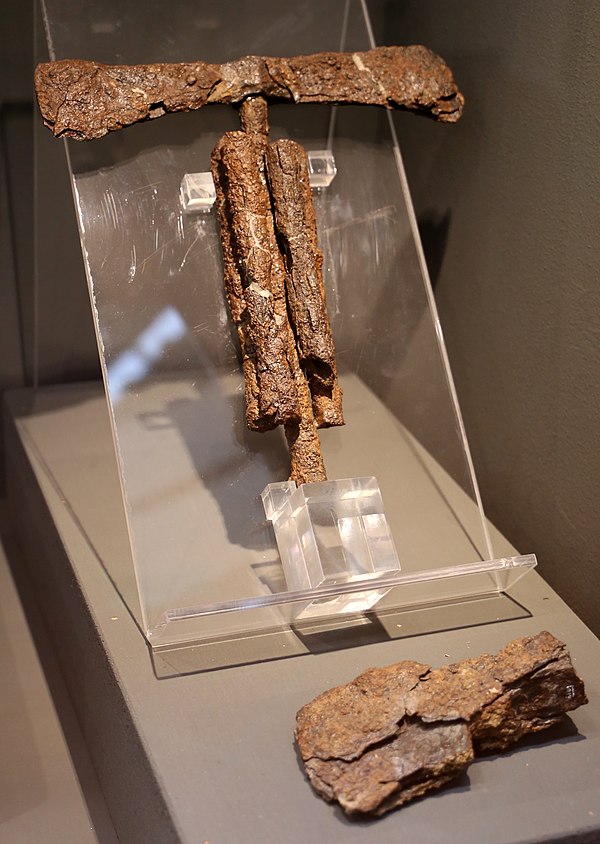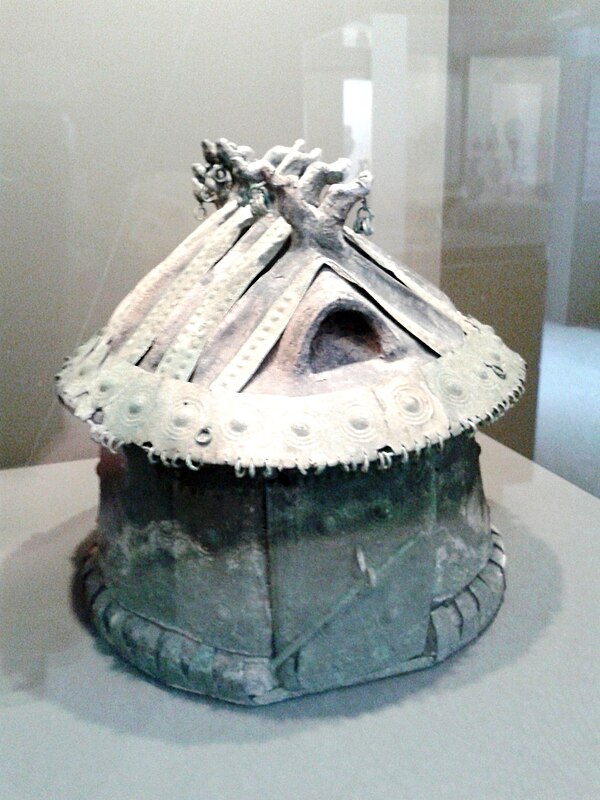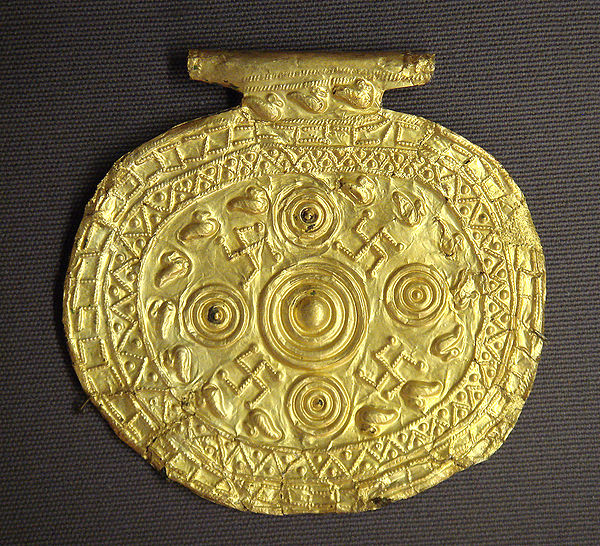Fasces
Videos
Page
Fasces is a bound bundle of wooden rods, often but not always including an axe with its blade emerging. The fasces is an Italian symbol that had its origin in the Etruscan civilization and was passed on to ancient Rome, where it symbolized a Roman king's power to punish his subjects, and later, a magistrate's power and jurisdiction. The axe has its own separate and older origin. Initially associated with the labrys, the double-bitted axe originally from Crete, is one of the oldest symbols of Greek civilization.

Aquila (Legionary eagle), toga figure, and fasces on reverse side of coinage

Earliest depiction of a fasces, discovered as a grave good in Vetulonia in 1897

Denarius minted by Marcus Junius Brutus depicting a personification of Libertas on left and Lucius Junius Brutus with lictors carrying bladed fasces on right

Rome, cloister of San Paolo, outside wall: marble panel depicting six fasces
Etruscan civilization
Videos
Page
The Etruscan civilization was an ancient civilization created by the Etruscans, a people who inhabited Etruria in ancient Italy, with a common language and culture who formed a federation of city-states. After conquering adjacent lands, its territory covered, at its greatest extent, roughly what is now Tuscany, western Umbria, and northern Lazio, as well as what are now the Po Valley, Emilia-Romagna, south-eastern Lombardy, southern Veneto, and western Campania.
Biconical cinerary urn with crest-shaped helmet lid, 9th–8th century BC, from Monterozzi (Fontanaccia), Tarquinia, Museo archeologico nazionale

Urn in the shape of a hut, which represents the typical Etruscan house of the Villanovan phase, 8th century BC, from Vulci, Musée d'art et d'histoire de Genève

Monteleone chariot, one of the world's great archaeological finds, 2nd quarter of the 6th century BC

Etruscan pendant with a large equilateral cross of concentric circles flanked by four small right-facing swastikas among its symbols from Bolsena, Italy, 700–650 BC. Louvre